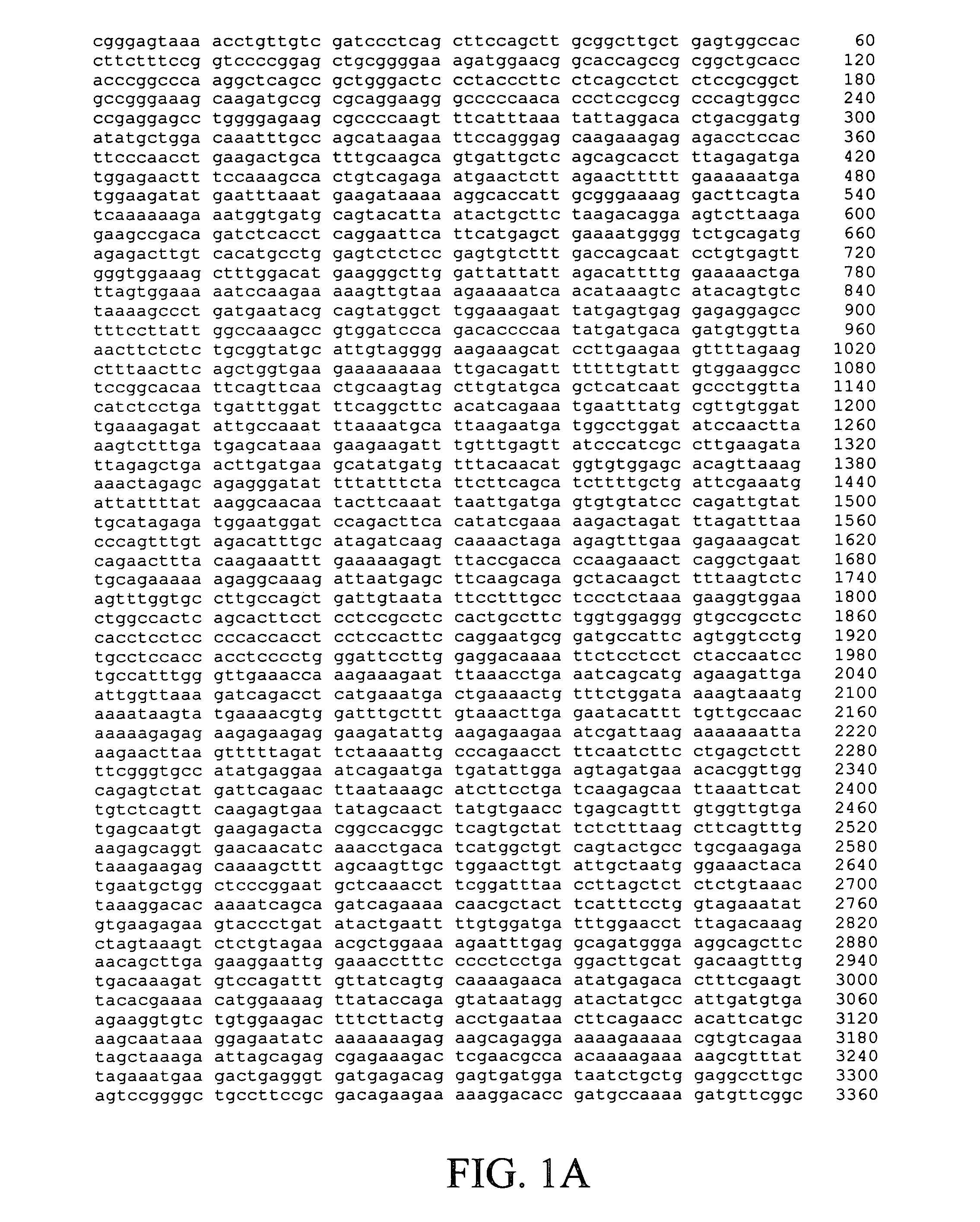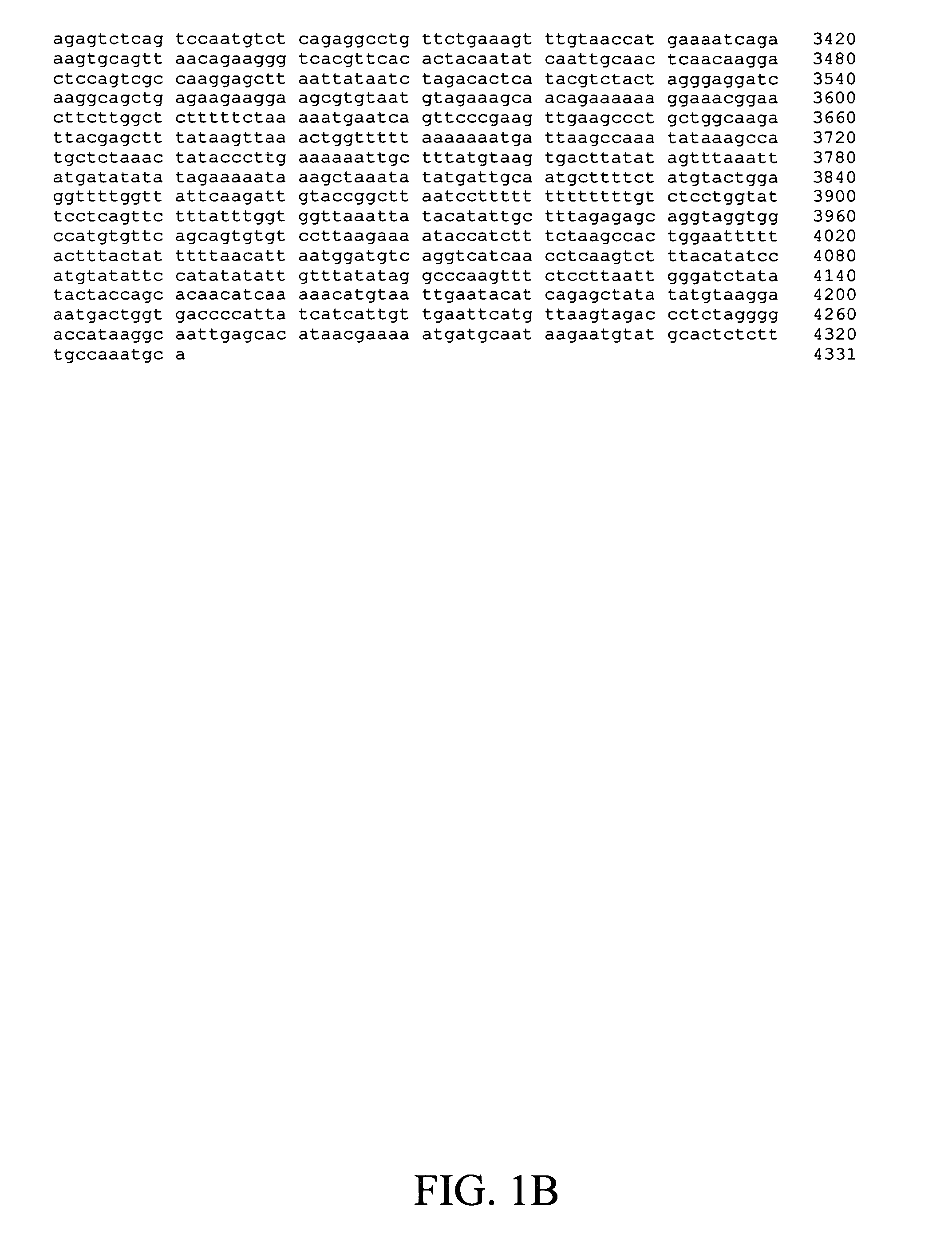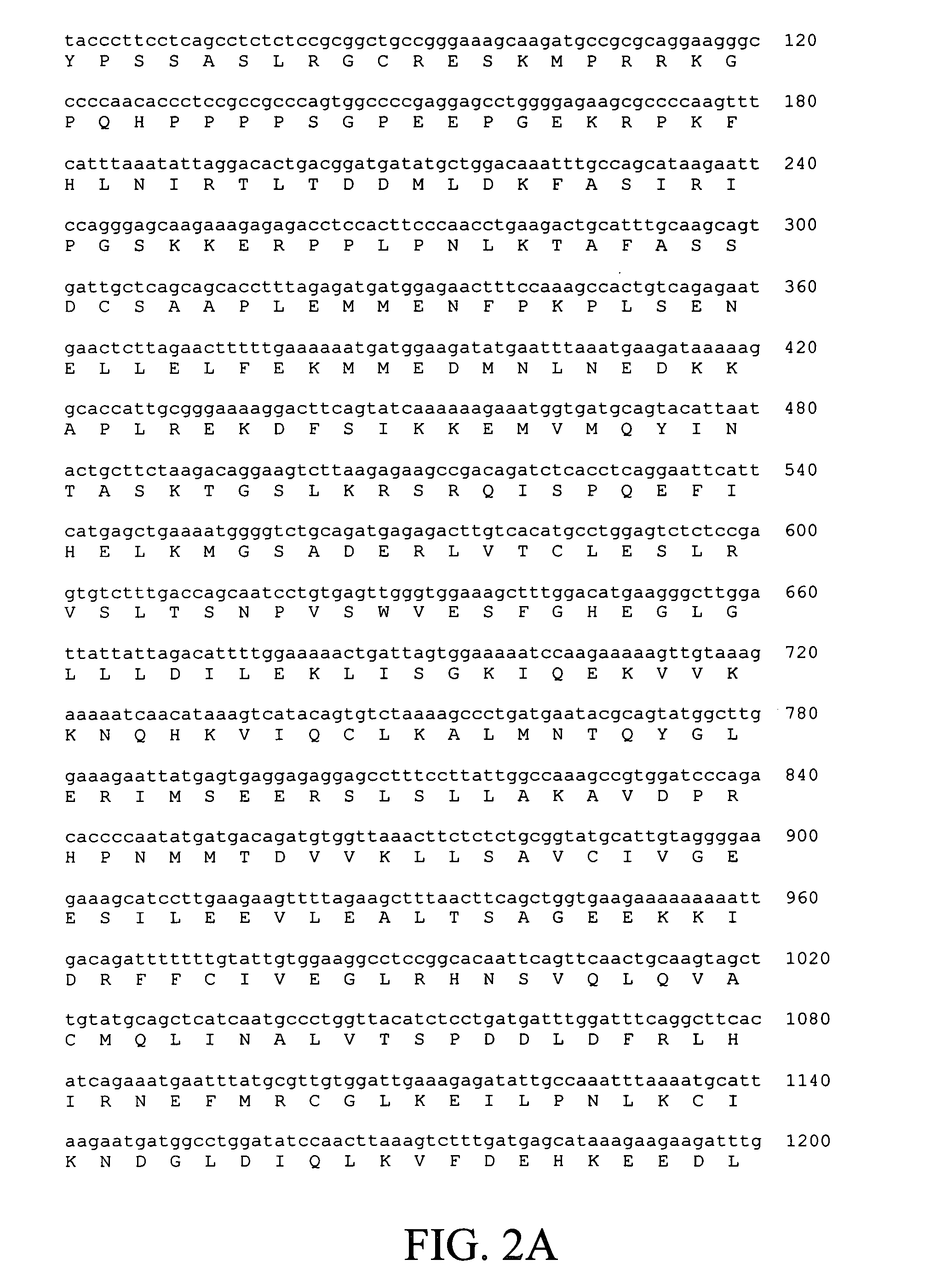Human diaphanous-3 gene and methods of use therefor
a human diaphanous and gene technology, applied in the field of human diaphanous3 gene and its fulllength sequence, can solve the problems of premature truncation of the protein product with abnormal or abolished function, no other clinically useful markers consistently associated with breast cancer, and no guarantee of success
- Summary
- Abstract
- Description
- Claims
- Application Information
AI Technical Summary
Benefits of technology
Problems solved by technology
Method used
Image
Examples
example 1
Full-Length Human DIAPH3 Gene as a Marker for Poor Prognosis of Breast Cancer
[0230] A study was undertaken to identify human genes the expression of which differed in breast cancer tumor cells in comparison to non-cancerous cells. The details of these experiments are disclosed in International Publication No. WO 02 / 103320, published Dec. 27, 2002, entitled “Diagnosis and Prognosis of Breast Cancer Patients,” which is incorporated herein by reference in its entirety. In these experiments, a set of 231 markers was identified whose up-regulation or down-regulation correlated with either good or poor prognosis, where poor prognosis is defined as the development in a patient of a distant metastasis within five years of initial diagnosis.
[0231] Array data indicated that three of these 231 markers, Contig28552, and Contig46218, and a partial cDNA, AL137718, the expression of each of which is highly correlated with poor prognosis, were overexpressed in poor-prognosis breast cancer patient...
example 2
Effect of Disruption of Human DIAPH3 on Cell Viability and Mitotic Spindle Formation
[0238] Materials and Methods
[0239] siRNA Transfection in 96-well plates. Small interfering RNA (siRNA) transfection is used to reduce the levels of mRNA for the targeted gene. This lowering of the amount of mRNA can cause lowering of the amount of the protein encoded by the targeted gene. The phenotype of loss of function of a gene can then be determined.
[0240] One day prior to transfection, 100 μL of HeLa cells grown in DMEM / 10% fetal bovine serum (Invitrogen, Carlsbad, Calif.) to approximately 90% confluency were seeded in a 96-well tissue culture plate (Corning, Corning, N.Y.) at approximately 1500 cells / well. For each transfection 85 μL of OptiMEM (Invitrogen) was mixed with 5 μL siRNA (Dharmacon, Denver, Colo.) from a 20 μM stock. For each transfection 5 μL OptiMEM was mixed with 5 uL Oligofectamine reagent (Invitrogen) and incubated for 5 minutes at room temperature. The 10 μL OptiMEM / Oligof...
PUM
| Property | Measurement | Unit |
|---|---|---|
| pH | aaaaa | aaaaa |
| volumes | aaaaa | aaaaa |
| volumes | aaaaa | aaaaa |
Abstract
Description
Claims
Application Information
 Login to View More
Login to View More - R&D
- Intellectual Property
- Life Sciences
- Materials
- Tech Scout
- Unparalleled Data Quality
- Higher Quality Content
- 60% Fewer Hallucinations
Browse by: Latest US Patents, China's latest patents, Technical Efficacy Thesaurus, Application Domain, Technology Topic, Popular Technical Reports.
© 2025 PatSnap. All rights reserved.Legal|Privacy policy|Modern Slavery Act Transparency Statement|Sitemap|About US| Contact US: help@patsnap.com



